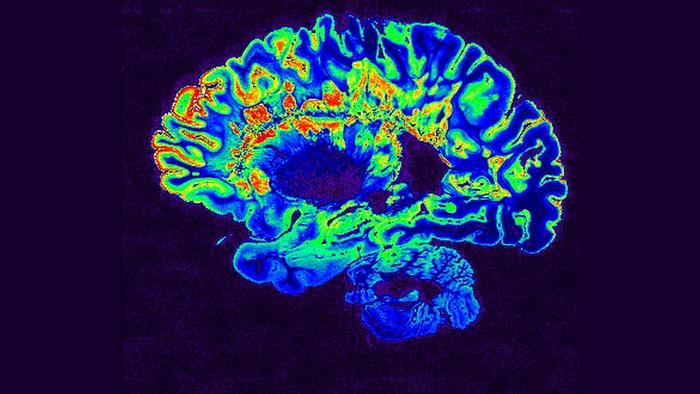According to the federal government’s National Institute of Neurological Disorders and Stroke, nearly 3 million people worldwide — with almost a third in the United States — are living with multiple sclerosis (MS), a disabling neurological disease in which the body’s immune system mistakenly attacks nerves feeding information to the central nervous system (the brain and spinal cord). Although rarely fatal, MS can lead to long-term disabilities, and impair movement, muscle control, vision and cognition.
There currently is no cure for MS. However, findings from a new Johns Hopkins Medicine study provide strong support for a promising advance toward that goal: the ability to reverse — and in many cases, completely alleviate — MS-like symptoms in mice.
The study appears today in the journal Science Advances.
For an unknown reason in people with MS, some of the body’s first line of defense against foreign invaders — immune cells known as CD4+ T cells — fail to recognize that myelin (the fatty material surrounding and protecting nerve cells) is a normal part of the human system. If these wayward, or effector T cells, become dominant, they may provoke inflammation that damages or destroys the myelin sheath, which in turn, can severely disrupt or curtail transmission of nerve impulses from all parts of the body to the brain.
“We developed a method for ‘tipping the balance’ of the T cells reaching the central nervous system from effectors to regulatory T cells, or T regs, that modulate the immune system and have been shown to prevent autoimmune reactions,” says study co-senior author Giorgio Raimondi, Ph.D., M.Sc., associate director of the Vascularized Composite Allotransplantation Research Laboratory and assistant professor of plastic and reconstructive surgery at the Johns Hopkins University School of Medicine.
“Using this therapy on mice bred to exhibit symptoms modeling those seen in humans with MS, we found we could enhance the growth of T regs while simultaneously reducing the number of effectors, resulting in reversal of the MS-like symptoms in 100% of the mice, and even more exciting, achieving a full recovery in 38% — in other words, more than a third were cured of their disease.”
The researchers achieved these intriguing results by using biodegradable polymeric microparticles — tiny bioengineered polymer spheres — to deliver three key therapeutic agents: (1) a fusion of two proteins: interleukin-2 (IL-2), which stimulates T cell production and growth, and an antibody that blocks certain binding sites on IL-2 to optimize the ones relevant to T reg expansion; (2) a major histocompatibility complex (MHC) class II molecule with a myelin peptide (protein fragment) “presented” on its surface to immunologically select myelin-specific (and therefore, protective of the nerve cell covering) T regs rather than other T cell types; and (3) rapamycin, an immunosuppressant drug that helps lower the number of effector T cells.
“We inject the loaded microparticles near lymphatic tissues to stimulate the production and growth of T regs and facilitate their travel to the central nervous system via the lymphatic system,” says study co-senior and corresponding author Jordan Green, Ph.D., director of the Biomaterials and Drug Delivery Laboratory and professor of biomedical engineering at the Johns Hopkins University School of Medicine. “Our study findings showed that in all of our mice, the T regs stopped the autoimmune activity of the effectors against myelin, prevented further damage to the nerves and gave them the time needed to recover.”
Furthermore, Raimondi says, the MS-like mouse disease, experimental autoimmune encephalomyelitis, was completely cured in more than a third (38%) of the animals.
Along with further studies to confirm the effectiveness of their potential MS therapy, Raimondi, Green and their colleagues plan to try their microparticle therapy-delivery system on other autoimmune diseases.
“First in line will be a mouse version of type 1 diabetes,” says study co-senior author Jamie Spangler, Ph.D., director of the Spangler Lab at the Johns Hopkins University School of Medicine, and assistant professor of biomedical engineering and chemical and biomolecular engineering at The Johns Hopkins University Whiting School of Engineering. “To engage and grow T regs specific for the insulin-producing cells in the pancreas damaged or threatened by that disease’s autoimmune activity, we’ll exchange the myelin peptide we used in the MHC-peptide portion of the MS therapy with one from those cells.”
“The belief is that by simply changing the presented peptide each time, we can target our therapy to tackle a wide variety of autoimmune diseases,” adds Green. “We hope to have a cache of potential therapies ready to go before moving forward to safety and efficacy studies in mice, followed hopefully by human trials.”
Along with Raimondi, Green and Spangler, the members of the study team from Johns Hopkins Medicine, The Johns Hopkins University, the Johns Hopkins Bloomberg School of Public Health and the Sidney Kimmel Comprehensive Cancer Center at Johns Hopkins are study lead author Kelly Rhodes, Marcos Iglesias, Dongwoo Lee, Shirley Lowmaster, Sarah Neshat, Kaitlyn Storm, Stephany Tzeng and Derek VanDyke.
The study was funded by National Institutes of Health grants R21AI160738, R01EB029455 and P41EB028239; JDRF grant 1-INO-2020-923-A-N; and Department of Defense grants W81XWH-18-1-0735 and MS200251.
The Johns Hopkins University has filed patents related to technologies discussed in the paper for Raimondi, Green, Iglesias, Rhodes, Spangler, Tzeng and VanDyke. The study authors report no other competing interests.
Journal
Science Advances
















